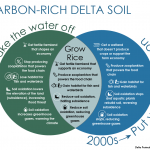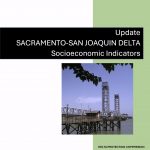Report: Many Socioeconomic Indicators for the Delta See Improvement
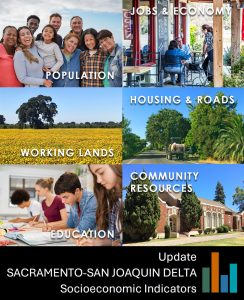 WEST SACRAMENTO, Calif. (March 21, 2025) – Unemployment fell. Median income rose. Land in agricultural production increased. These improving socioeconomic indicators for the Sacramento-San Joaquin Delta are highlights of a report released today by the Delta Protection Commission.
WEST SACRAMENTO, Calif. (March 21, 2025) – Unemployment fell. Median income rose. Land in agricultural production increased. These improving socioeconomic indicators for the Sacramento-San Joaquin Delta are highlights of a report released today by the Delta Protection Commission.
The Socioeconomic Indicators Update is the second report in an ongoing series providing a scorecard of key measures of wellbeing in the Delta, tracking them both over time and in comparison with the state as a whole. The first report (PDF) covered data from 2011 to 2016, and the update covers 2017 to 2022.
The release of the update includes public access to the source data. Data used in the report come from the National Center for Education Statistics, 2021 American Community Survey, California Department of Fish and Wildlife, Cropscape and the California Public Utilities Commission.
“The Delta Protection Commission is committed to tracking the effects of the state’s Delta Plan on our region’s economy and quality of life,” said DPC Program Manager Virginia Gardiner, who co-led the update with Delta Stewardship Council Senior Environmental Scientist Chris Kwan, PhD.
“This scorecard does just that, and can be used by Delta residents, elected officials, and others to identify priorities or needs for additional information.”
Key findings of the report include:
- The unemployment rate dropped by 5.4 percentage points in the Secondary Zone, from 12.4% to 7%.
- The 7% unemployment rate in the Delta was slightly higher than the statewide rate of 6.5%, but substantially lower than the San Joaquin Valley rate of 9.3%.
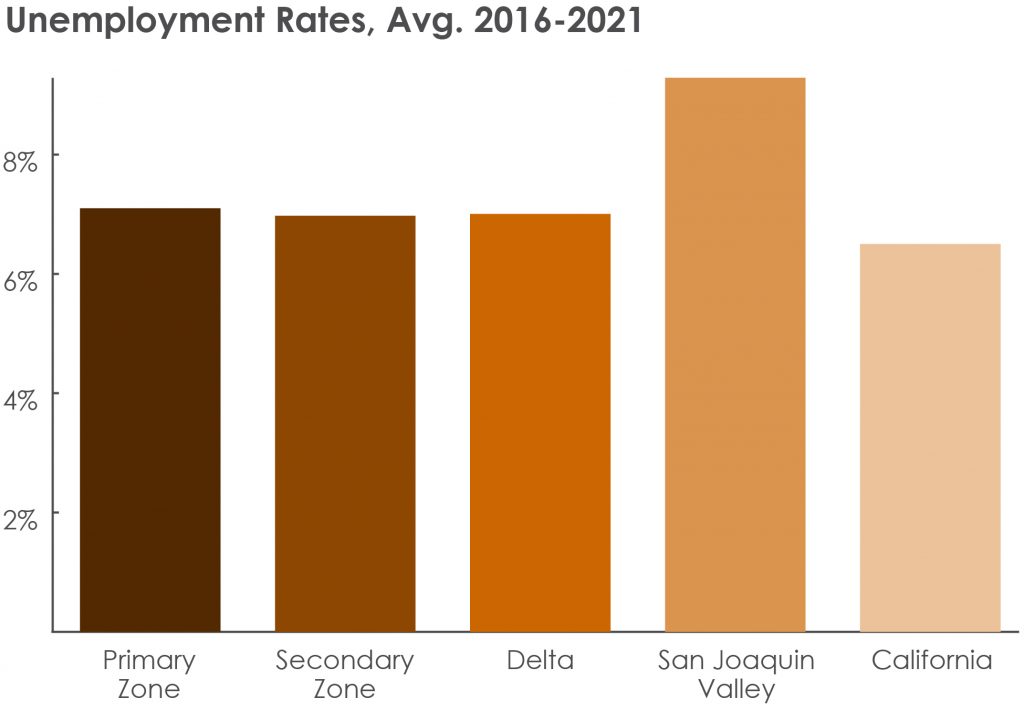
- Both median household and median individual incomes for the Delta increased over the previous period and were higher than the state’s as a whole.
- Land in agricultural production from 2017 to 2022 increased by over 10% over the 2011-2016 study period.
- Continuing trends from the previous period, higher value crops were being planted, with corn coverage dropping and almonds increasing.
- In 2022, 350,000 acres of land in the Primary Zone were in active agriculture: Top crops by total land cover were alfalfa, corn, grapes, clover/wildflowers, and winter wheat.
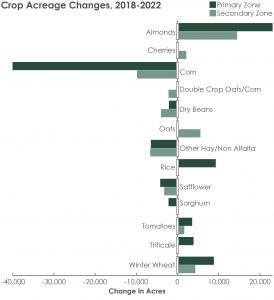
- Road pavement conditions, a measure of quality of infrastructure and public safety, worsened compared with the previous period by over 20%.
For more information about this report, email Virginia Gardiner.
Related
The Delta Residents Survey, published in 2023, explores Delta residents’ sense of place, quality of life, risks/resilience to climate change, and civic engagement. The survey was conducted by the Delta Stewardship Council with researchers from UC Davis, UC Berkeley, and Oregon State. Read the survey summary here, and explore the data here.
Articles Exploring Delta Data
